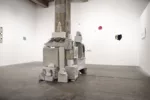by Diane Burko and Richard Ryan
Just back from a week long American Geophysical Union (AGU) conference in San Francisco on all things geological, where Diane was invited to give a paper. Here is how they describe it: “The AGU Fall Meeting is the largest worldwide conference in the geophysical sciences, attracting nearly 20,000 Earth and space scientists, educators, students, and policy makers. This meeting showcases current scientific theory focused on discoveries that will benefit humanity and ensure a sustainable future for our planet.”
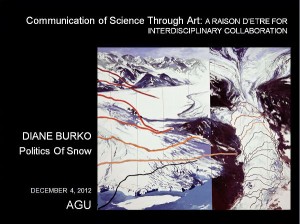
Sunday began with a screening of Chasing Ice, the story of James Balog’s mission to change the tide of history by gathering undeniable evidence of our changing planet (see trailer at the film’s website).
A while back he admitted to being a climate change skeptic– until he saw glaciers retreating first-hand.
It is an amazing film which is a MUST SEE and now playing here at the Ritz at the Bourse.
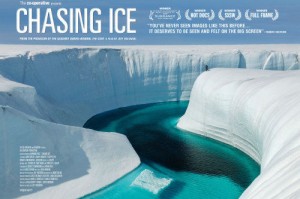
Afterward, Balog joined a panel with Tad Pfeffer (a geologist who first introduced the filmmaker to the time-lapse idea to illustrate this dramatic disintegration of glaciers), and Jason Box from the Byrd Polar Research Center of Ohio State University. Both men are friends and collaborators of Diane’s for her POLITICS OF SNOW project. Needless to say, the whole week was, for both of us, like being at the Academy Awards, connecting with many individual scientists and listening to lectures from people like Ira Flatow and Richard Alley.
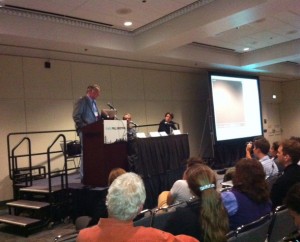
But science is not enough – art had to be part of the experience and luckily the Moscone Conference Center in downtown SF is close to a group of gallery buildings on Geary Street. We visited two main ones: 49 Geary and 77 Geary, where we discovered high-quality exhibitions in which more photography was showcased than we had expected.
The stand out was an intriguing show of work by Linda Connor at the Haines Gallery: From Two Worlds, (closed December 22), which paired two seemingly divergent perspectives. The first was The Olson House portfolio, with photographs of the Olson House, a 200-year old farmhouse made iconic through the paintings of Andrew Wyeth. Those images were first debuted at the Cincinnati Museum in 2006. There is a nice catalog with an essay by Wanda Corn, who explains: “Wyeth’s Olson House was often melancholy and wistful, a site of human decay and hardship; Connor’s Olson House is mysteriously alive and animated.”
The second group of photographs revisited Connor’s well-known pictures of spiritually-charged sites. These works are newly displayed as large-scale photographs printed on silk, which adds to the spirituality of the installation. I gathered that these hangings represent a new strategy for interpreting both Connor’s older and more recent works, taken in countries including Cambodia, Bali, Egypt, Peru, India and Australia.
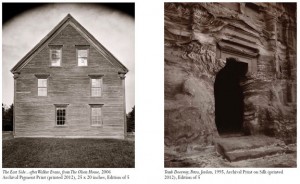
At the Stephen Wirtz Gallery, Michael Kenna’s show, Focus East (closed December 22) was an exquisite exhibition of small black-and-white photographic prints that were magical in ambience and amazing in terms of execution. We were drawn to the elegant square format of each image, sometimes seeing them as subtle H pencil drawings and other times mistaking them for rich charcoal images, or in some instances as watercolors. This extensive group was accompanied by a beautiful book on this epic, in-depth series that began in 2000 in Japan, and recently expanded to include China, Vietnam, South Korea, Thailand, and India. We must admit we had never heard of him, but we should have. He’s been photographing for 40 years and has had over fifty published books and monographs.
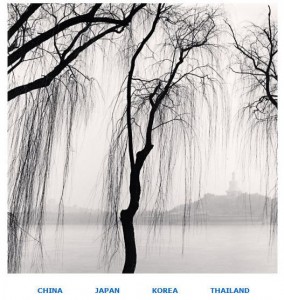
However, our main art experience was at the San Francisco Museum of Modern Art. SFMOMA, a beautiful 225,000-square-foot building designed by Mario Botta in 1995, has undergone a recent redesign to make it feel more accessible to the public (sounds like a Kimmel Center problem). We love the expansiveness of the atrium, with numerous other public areas, including a great rooftop sculpture garden café.

The highlight at SFMOMA was without a doubt the revelatory, in-depth Jay DeFeo (1929-1989) Retrospective (to February 3, 2013) and luckily for us East Coast people, it is traveling to the Whitney: February 28–June 2, 2013.

Diane remembers the Moore College of Art’s 1996 DeFeo show and her memory of “The Rose” is palpable. Imagine our joy to find this in depth, expansive exhibition before us! Diane has always believed DeFeo never got the attention she deserved. She was one of the most important, innovative artists of her generation — at the center of a vibrant Bay Area community of artists, poets and musicians in the 50s.
DeFeo is best known for “The Rose” (1958–66) (now in the Whitney’s collection), a monumental piece with a legendary weight of almost two-thousand-pounds and depth of more than 8″ which she spent eight years making and which later languished hidden behind a wall for two decades. But the artist created an astoundingly diverse range of works spanning four decades.
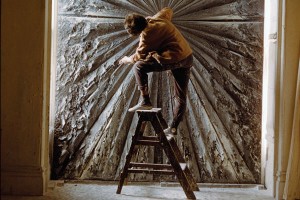
What makes this exhibition so special is that “The Rose” is placed in the context of her whole body of work. This show surveys her early use of synthetic polymers, photo collage, photographs, small sculpture and jewelry along with works revealing her unique drawing skills. She was an artist of vision, creative daring and great authenticity.
In one of the first rooms, Diane was drawn to a rich grey painting from 1955 when the artist was 26. Richard pointed out the title, “Untitled (Everest),” from the series Mountain, saying it figures that would be the one the mountain lover, Diane, would like.
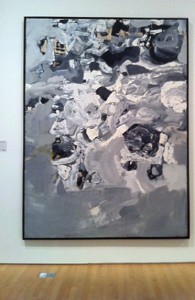
This exhibition brings out this truly gifted artist’s story in a stunning full installation that finally does her life justice.
Meanwhile, elsewhere in the museum were exhibitions to delight on every floor with references hearkening back to Philadelphia.
In a group show titled SIX LINES OF FLIGHT, we were reminded of Julien Robson’s HERE exhibit at PAFA, which posited that the centers of the art world are everywhere. This show set out to prove the same point not nationally, as Julien did, but globally. PHILAGRAFIKA artist OSCAR MUNOZ presented new works continuing his focus on presence and absence by utilizing documentary footage from the 50s for a new, evocative set of charcoal-powder-on-acrylic drawings.
Then there were two separate installations of Rafael Lozano-Hemmer, which sadly we found more successful than his recent Philadelphia Parkway debut. It was a shame that the promise of his project just didn’t resonate as well as expected in the night sky on the Parkway because he is truly an incredibly gifted artist.
One sound and video installation, “Frequency and Volume: Relational Architecture 9” (2003), was about using radio frequencies from commercial music stations, police radio bands and air traffic control throughout the US. The piece responded to participants using their own bodies to create amazing shadows and sounds as they would travel through the space. Here’s the museum’s explanation: “The radio equipment installed in an adjacent gallery and a sculptural antenna on an outdoor terrace make visible the museum’s status as both a receiver of frequencies and a producer of feedback in a larger spectrum of Bay Area radio culture. The exhibition is part of the 2012 ZERO1 Biennial.”
We enjoyed this immensely!
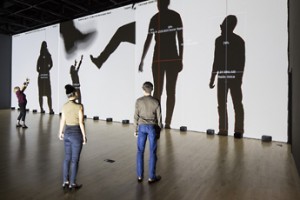

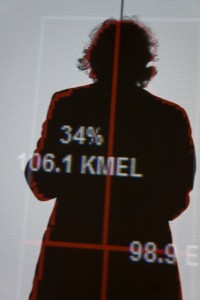
Another mesmerizing installation was by the the San Francisco collaborative Futurefarmers, along with a newly published book called A Variation on the Powers of Ten. That installation was in the group show, Six Lines of Flight (to Dec. 31).
Serendipitously, we had spent the previous afternoon at Hunter’s Point visiting artists’ studios with curator friend Patricia Watts of Eco-Arts fame. At her suggestion, we ended our time together back downtown at the Futurefarmers book signing. The show was so worthwhile – we recommend getting the book!
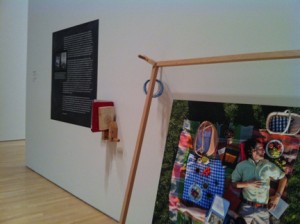
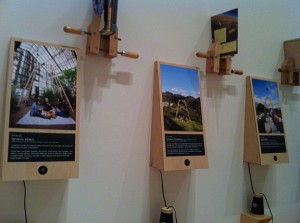
Here’s how SFMOMA described the project:
Their recent project A Variation on the Powers of Ten, developed by Franceschini (b. 1970) and Swaine (b. 1971), draws inspiration from Powers of Ten (1968), a short documentary by Charles and Ray Eames that depicts the relative scale of the universe. The film opens with two people having a picnic; Franceschini and Swaine have restaged that scene, inviting ten scholars from major universities, each assigned a power of ten, to sit with them for individual alfresco feasts featuring menus and conversation topics of the scholars’ choosing. Through such projects, Futurefarmers consistently imagines new ways of relating notions of audience, authorship, utility, and spatial politics to art practice.
—Diane Burko and Richard Ryan are Philadelphia artists.





